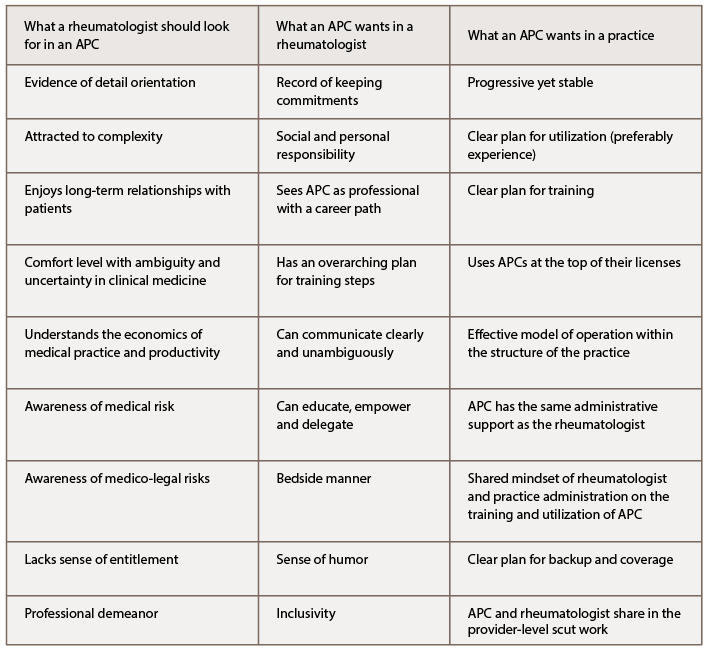Ms. Kirchner believes that NPs, in particular, should take note of who is doing traditional nursing functions in the group, lest those tasks fall to the NP as well. Does the APC have administrative support equivalent to the rheumatologist, or would they be making all their own phone calls? Down the road, would flexibility exist in the operational sphere for the APC to model a schedule that sustains work-life balance, a flexibility that is highly desirable?
Hans Panwala, a PA-C from North Carolina, pointed out that rheumatologists should be aware that APCs must recertify based on general medical knowledge, so their educational time off and stipend may not all be spent on rheumatology gatherings.
How would rheumatologists interview effectively to select an APC? Katy Privon, an NP from Boise, Idaho, suggested adapting behavioral interviewing techniques, such as those used in Fortune 500 companies for managers and executives. “I think you really need to ask the hard questions … to find out if the person is really motivated to learn. New grads are often very eager. They don’t already have bad habits and are sometimes very moldable.” Table 2 provides a thumbnail compilation of the needs of the negotiating partners in the rheumatologist-APC dynamic.
‘When thinking of hiring an APC, precept a student from a PA school or an NP school … for six to eight weeks if you can. That way you get to know them & whether you fit well together, & they get to learn your practice.’ —Katherine Clark, PA-C
Salary & Benefits vs. Productivity
General salary data available from the Practice Match 2017 Nurse Practitioner and Physician Assistant Salary Survey for APCs indicate a bell curve in income from $75,000–150,000. The mean is $111,429, with variation depending on region and specialty. The Medical Group Management Association (MGMA) provides an alternative way to measure productivity, using work relative value units (wRVUs), which appears to rapidly becoming an industry standard. According to the MGMA 2015 Compensation and Productivity Survey, at the 80th percentile, wRVU per hour is 2.11 for APCs.
Survey data specific to rheumatology APCs are not readily available. Calculations from AARA may not be representative of America’s rheumatology APC population but are available as an initial benchmark (see Table 3, p. 48). The income range for a full-time equivalent (FTE) APC in AARA is $121,000–154,000, mean $127,000. The mean total direct cost to the practice of $151,000 for the FTE APC is itemized in Table 3. Mean revenue generated by the FTE APC of $314,000 translates historically in 2017 to an accrual of mean $201,000 to the supervising rheumatologist’s accounting, minus any increase in fixed and labor costs attributable to the APC that could be extrapolated to approximately $10,000–20,000 annually.




